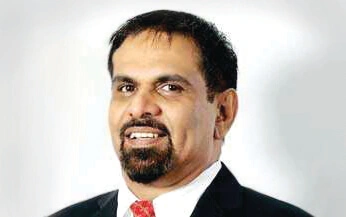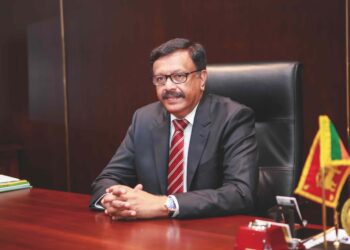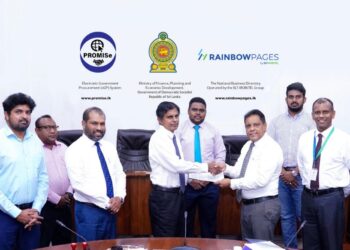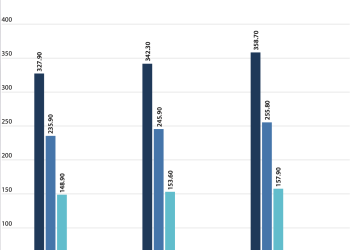
The highest rate for employee income is now increased from 18% to 36%. The revenue planners of this country do not like to learn from developed countries how to recover the cost of government services to the people. They would instead stick to the traditional methods of taxing income earners. There are other ways of recovering the costs of the government and services. The only success story here in Sri Lanka is the passport office. For example, whereas people had to wait for several weeks to obtain a passport for a small fee, they successfully introduced a one-day service for payment of a higher fee. If I am not mistaken, this system recovers the cost of the passport operation and possibly makes a surplus for the department. Apart from this, the treasury or the revenue planners need to be more capable of thinking outside the box, increasing the taxes on private sector employees and exporters.
Most governments have three ways of recovering the expenditure. One is direct taxes such as VAT and income taxes. The second is indirect taxes, such as taxes on food and other imported items. The third, user–pay, is rarely used in Sri Lanka except for passports and motorway use. Unlike other taxes, the payers do not hate user-pay fees and taxes as they get a direct benefit for what they pay.
Also, the user-pay method is a fair system of recovery of costs, unlike making a few people subsidize the services mainly provided to others.
Many government services are now provided free of charge or for a small fee. In any society, subsidizing low-income families is always justified. However, providing free or subsidized services to those who can afford to pay and making private-sector employees pay higher taxes on their income is grossly unfair.
The following are a few examples where the system can be changed to shift to a user-pay method and reduce dependency on the higher income tax from the exporters and the private sector employees.
- One of the most significant expenditures of the government is education and higher education. There are approximately 4.2 million schoolchildren between grades 1–12. It is fair to assume that at least 15% of these students come from families with a monthly income of over Rs. 100,000 or with assets of over Rs. 25 million. If such children were made to pay Rs. 5,000 a month for education, the total annual revenue of the education department would be Rs. 37.8 billion. In parallel, the government could also impose a fee of Rs. 5,000 a seat in every private school.
- Except for a few highways, all other roads do not charge users for their use. With a per kilometer fee (say 1/3 of the per/km fee for motorways) for the other major roads, the government could at least recover a part of the cost of maintenance and renovation of roads. Rather than having staffed booths like on our highways, there are electronic user fee-collecting systems. An exemption could be given to passenger buses, motorcycles, three-wheelers, and lorries.
- The government also spends a considerable amount of money on the work done by the local government institutions. However, the rates charged by the local government institutions are negligible compared to the costs—an apartment or a house worth Rs. 50 million has to pay only Rs. 2,500 a year as a rate. The government could easily charge 0.5% of the property’s value, which would be Rs. 250,000/= a year or around Rs. 20,000/= a month. That is 100 times the current rate. The government could allow the local bodies to retain 30% of the amount they collect as rates and take the balance to cover the infrastructure costs theymust maintain. Also, this will eliminate the costs the central government is paying to local governments. With the government’s infrastructure costs, the property value goes up substantially. Hence, it is fair to recover 0.5% a year on the property value as the owners could enjoy 99.5% of the gain. The current license fee for motor vehicles is also way too small. For example, a Rs. 30 million worth of Land Cruiser Prado has to pay a license fee of Rs. 4,000/=. This is compared to the famous SRI tax introduced by Dr. N.M. Perera in the ’70s, where a car with a registration number starting with 6 SRI had to pay Rs. 600/= a year. While the owner of a Prado would pay only Rs. 4,000/= for the revenue license, he would pay Rs. 600,000/= to insure the same car for one year. The RMV should charge at least 0.2% for the revenue license, which will be Rs. 40,000/-a year. The licensing fees for motorcycles below 300 CC and three-wheelers should remain as it is. The Automobile Association could easily provide the average valuation for each YOM and model of a vehicle to the RMV. Such a fee will increase the revenue of RMV by ten times.
5. The government can implement a student loan scheme for higher education by the government universities. The loan is to be paid monthly for ten years after completing the degree without interest. This will recover a substantial portion of the government’s costs on universities. Subsequently, the student loan scheme could be extended to includeprivate universities. To estimate the recovery, if one assumes 50,000 students enter state universities a year, and the fee for higher education degree is Rs. 10,000/-a month, then the income for a year will be in the range of Rs. 24 billion. There are several advantages to this method. One is that the students will attempt to complete their degree on time rather than staying in university without completing the degree. This is due to his monthly cost increasing by Rs. 10,000/=.The other is that as the university gets paid Rs. 10,000/= a month for every student, they admit they will try to increase the capacity and the intake to increase their revenue.
6. Even for healthcare, a fee of Rs. 100/= for a consultation and, say, Rs. 500/-a day for hospitalization and Rs. 5,000/= for surgery is not unfair for members of a family that has an income of over Rs. 100,000/= a month or Rs. 25 million in assets.
7. Although not an example of a possible user-pay service, the cost of a poverty alleviation scheme (samurdhi) could also be modified to be less costly to the government and more effective for recipients. The poverty alleviation systems have failed to pull a significant portion of the poor out of their situation. If the government coordinates a scheme in which people and companies volunteer to look after a needy family by providing Rs. 10,000 a month, it will be way better than Rs. 3,000 or so the samurdhi pay. The most significant advantage is that the sponsor could provide children with used or new clothes, books, and education and career guidance. Some would help their recipient families with assistance for home renovations, household goods, and food. While many well-to-do individuals and families will volunteer to sponsor another (poor family, large state-sector and private-sector banks and other organizations will volunteer to support hundreds of families. The most crucial part of such a scheme is the guidance and further help the low-income families would get, so many families would come out of poverty after a few years.
The unfair part of this is that private sector employees are made to subsidize the services the government provides for everyone. The private sector employees not only pay for the salaries of the government sector employees but also have to fund their pensions.
The government should introduce a free services card for families with an income of less than Rs. 100,000 a month or Rs. 25 million in assets so they can be provided with free education and healthcare. This should be done based on an affidavit signed by the head of the household. If an applicant gives a false affidavit on their income and assets, they could be prosecuted, and a fine of several times the cost of free services provided could be recovered. Similar systems are implemented in developed countries with reasonable success.
Include high-salaried state employees for income tax While none of the government sector employees pay any tax on their employment income, private sector employees (who do not qualify for any pension on retirement) have to pay exorbitant taxes on their employment income from October 2022. The unfair part of this is that private sector employees are made to subsidize the services the government provides for everyone. The private sector employees not only pay for the salaries of the government sector employees but also have to fund their pensions.
As the current tax-free threshold is Rs. 100,000/= a month, why cannot the income taxes also apply to government sector employees? A salary of Rs. 100,000/= is way more than an average government sector employee gets. There would not be resistance from anyone as only the people with higher incomes get taxed like their counterparts in the private sector. A private sector employee making over Rs. 100,000/-a month must pay the same prices for goods and services as a government sector employee.
The writer is a Fellow of the Chartered Institute of Management Accountants of the United Kingdom and has been awarded an MBA from the University of Sri Jayewardenepura. He has held the positions of executive director and non-executive director in several companies in manufacturing, banking, insurance, healthcare, telecommunication, and several other industries. He is currently a director of Melstacorp.





